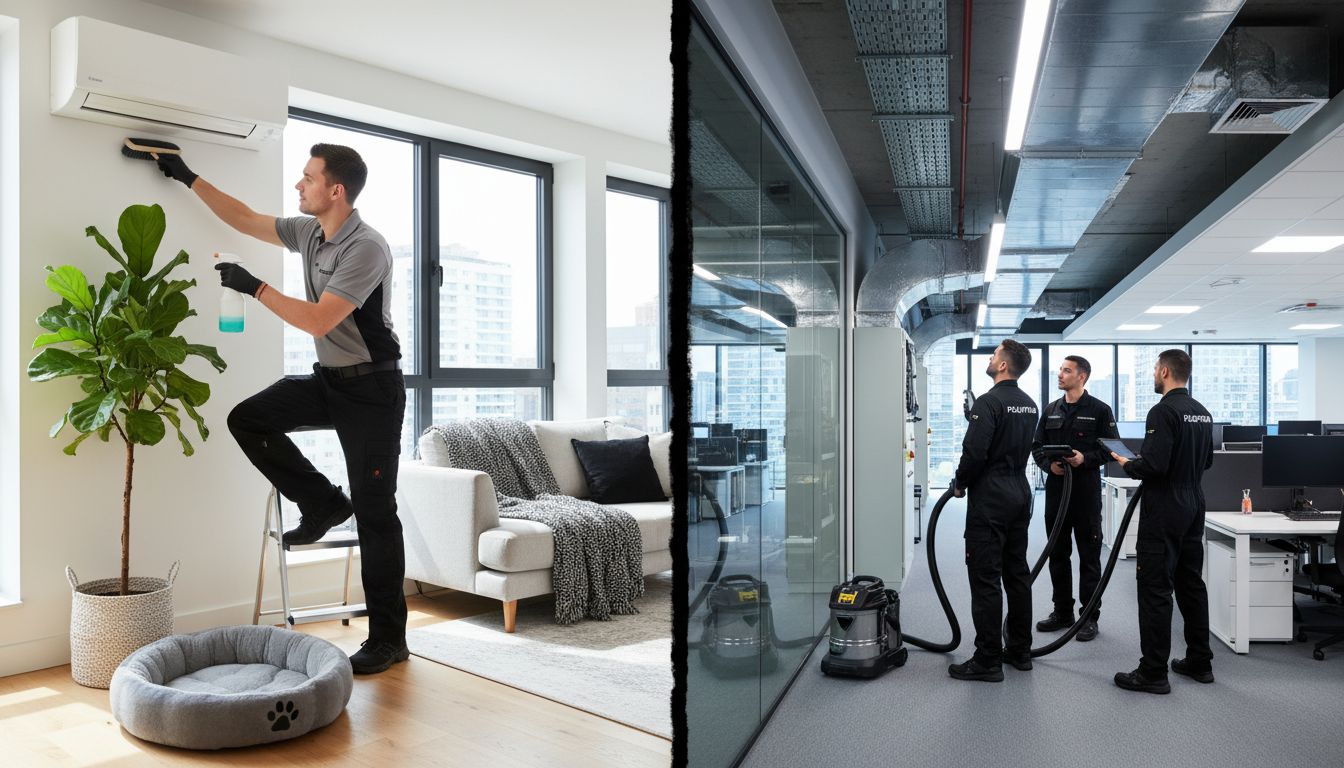
Complete Guide to Commercial vs Residential AC Cleaning
More than 30% of indoor air quality complaints are linked to poorly maintained air conditioning systems, an issue that affects both american homes and businesses. Clean air matters in every environment, but not all AC systems face the same challenges. Whether you manage an apartment or a vast office building, understanding how residential and commercial air conditioners differ helps you choose the right cleaning approach, keeping your space safer and your systems running longer.
Table of Contents
Contents
- 1 Table of Contents
- 2 Key Takeaways
- 3 Defining Commercial and Residential AC Cleaning
- 4 Key Differences Between Commercial and Residential Systems
- 5 Step-By-Step Cleaning Process Comparison
- 6 Risks, Compliance, and Health Standards
- 7 Cost Factors and Choosing the Right Service
- 8 Protect Your Indoor Air Quality with Expert AC Cleaning Solutions
- 9 Frequently Asked Questions
- 9.0.1 What are the main differences between commercial and residential AC cleaning?
- 9.0.2 How often should commercial AC systems be cleaned compared to residential systems?
- 9.0.3 What are some common health risks associated with poorly maintained AC systems?
- 9.0.4 What factors should be considered when choosing an AC cleaning service?
- 10 Recommended
- Defining Commercial and Residential AC Cleaning
- Key Differences Between Commercial and Residential Systems
- Step-By-Step Cleaning Process Comparison
- Risks, Compliance, and Health Standards
- Cost Factors and Choosing the Right Service
Key Takeaways
| Point | Details |
|---|---|
| Distinct Cleaning Needs | Residential and commercial AC systems have vastly different cleaning and maintenance requirements due to their scale and complexity. |
| Health and Compliance Risks | Improperly maintained AC systems can pose significant health risks, necessitating adherence to strict cleanliness and maintenance standards. |
| Cost-Effectiveness of Professional Services | Investing in professional AC cleaning can reduce energy consumption and extend equipment lifespan, making it a financially sound long-term strategy. |
| Tailored Maintenance Strategies | Property managers must implement customized maintenance strategies that suit the specific operational context and environmental challenges of each AC system. |
Defining Commercial and Residential AC Cleaning
Air conditioning systems are complex mechanical networks that serve fundamentally different purposes in commercial and residential environments. According to research from ijtsrd, these systems share core operational principles but require distinctly tailored cleaning and maintenance approaches based on their specific usage contexts.
In residential settings, AC systems typically serve smaller, more controlled spaces like apartments, homes, and individual living units. These systems are designed for personal comfort, managing temperature and humidity for a limited number of occupants. Residential AC units are generally smaller, with simpler ductwork and more straightforward airflow patterns. They demand precision cleaning that focuses on removing household-specific contaminants like pet dander, dust mites, cooking residues, and localized particulate matter.
Commercial AC systems, conversely, operate on an entirely different scale and complexity. As detailed in the espjournals study, these systems must manage significantly more challenging environmental conditions. They handle larger spaces like office complexes, shopping centers, hospitals, and industrial facilities, which require more robust cleaning protocols. Commercial systems must address multiple challenges:
- Handling higher occupant loads
- Managing more complex air circulation patterns
- Dealing with diverse pollutant sources
- Maintaining consistent performance across expansive areas
- Supporting extended operational hours
The cleaning requirements for commercial AC systems are substantially more intensive. Unlike residential units, these systems must accommodate continuous operation, diverse environmental stressors, and more complex ventilation networks. Technicians like those at SaniAC by Saniservice must employ specialized techniques to thoroughly sanitize these intricate systems, ensuring optimal air quality and system efficiency across different commercial environments in Dubai.
Understanding these distinctions is crucial for property managers and building owners. Each AC system demands a nuanced approach that considers its specific operational context, usage patterns, and environmental challenges. By recognizing these differences, property stakeholders can develop targeted maintenance strategies that preserve system integrity, optimize energy efficiency, and maintain superior indoor air quality.
Key Differences Between Commercial and Residential Systems
Commercial and residential air conditioning systems differ dramatically in their design, complexity, and operational requirements. According to research from espjournals, these differences fundamentally impact energy consumption, maintenance protocols, and overall system performance across various building types in Dubai and beyond.
System Capacity and Scale represent the most immediate distinguishing factor between commercial and residential AC systems. Residential units typically range from 1 to 5 tons of cooling capacity, designed to manage individual living spaces with relatively consistent environmental conditions. Commercial systems, by contrast, often require multiple units or centralized systems capable of handling 10 to 50 tons of cooling capacity, supporting expansive areas with complex thermal management needs.
The structural and operational variations between these systems are profound. As detailed in the ijtsrd research, key differences include:
- Complexity of Ductwork: Residential systems feature simple, linear duct configurations, while commercial systems have intricate, multi-zone network designs
- Air Handling Units: Residential units use compact, single-zone handlers; commercial systems employ massive, multi-zone units with sophisticated air distribution mechanisms
- Control Systems: Home systems use basic thermostats; commercial environments require advanced building management systems with zone-specific climate control
- Maintenance Frequency: Residential units need cleaning 1-2 times annually; commercial systems require quarterly or even monthly professional interventions
Material composition and durability also diverge significantly.
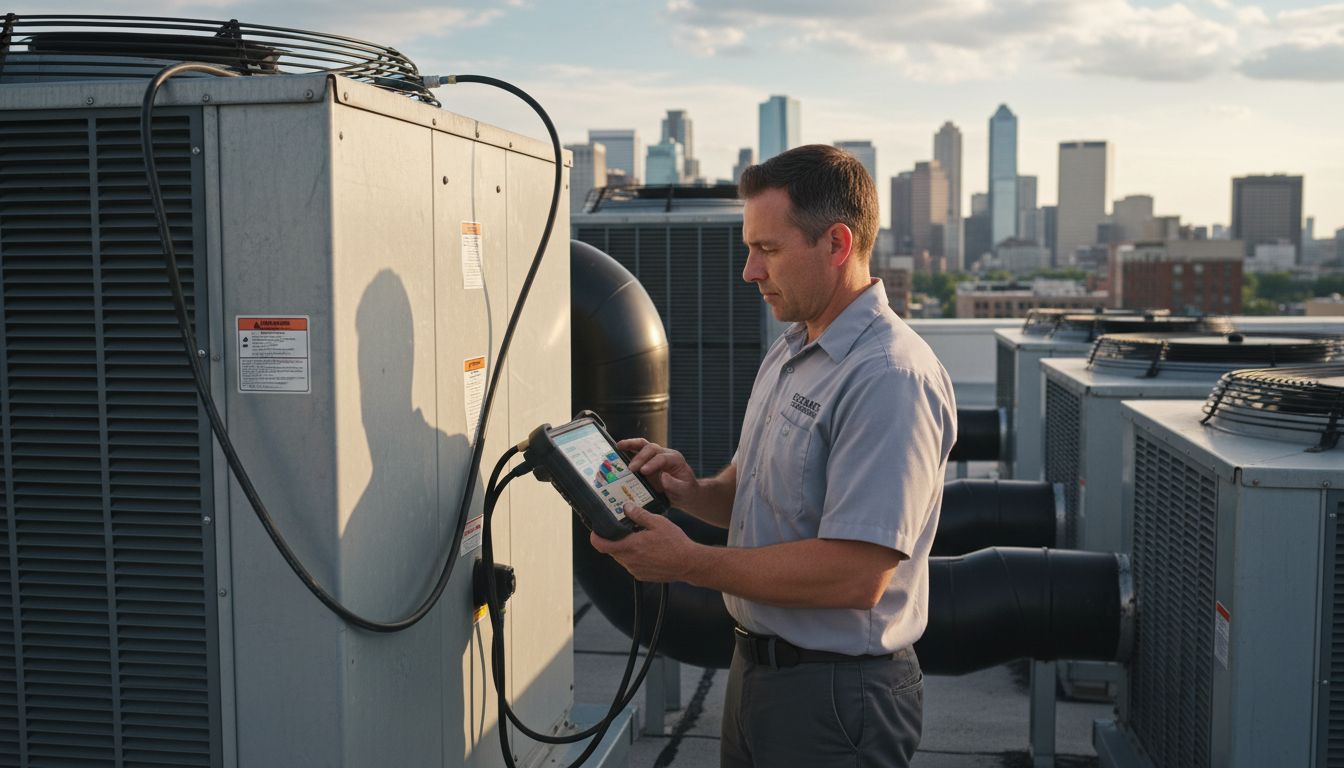
Understanding these distinctions is crucial for effective maintenance and optimal performance. Property managers and facility administrators must recognize that a one-size-fits-all approach to AC cleaning is fundamentally ineffective. Each system demands a targeted strategy that considers its specific operational context, environmental exposure, and usage patterns.
Step-By-Step Cleaning Process Comparison
Cleaning air conditioning systems requires a meticulously tailored approach that varies significantly between residential and commercial environments. According to research from ijtsrd, the fundamental cleaning principles remain consistent, but the execution demands distinct strategies based on system complexity and operational context.
For residential AC systems, the cleaning process typically follows a more streamlined approach. Technicians like those at SaniAC by Saniservice focus on a concise, targeted cleaning sequence:
- Initial system inspection and performance assessment
- Power disconnection and safety preparations
- External unit and surface debris removal
- Coil and filter comprehensive cleaning
- Drainage system inspection and clearing
- Reassembly and functional testing
Commercial AC cleaning processes, conversely, demand a much more intricate methodology. These systems require extensive preparation, advanced diagnostic tools, and specialized equipment. espjournals research highlights that commercial cleaning protocols must address significantly more complex environmental challenges.
The commercial cleaning process expands on residential techniques with additional critical steps:
- Comprehensive multi-zone system diagnostics
- Advanced air quality testing
- Detailed ductwork mapping and inspection
- Specialized industrial-grade sanitization techniques
- Comprehensive documentation and performance tracking
- Zone-specific treatment protocols
Unique considerations emerge when comparing these approaches. Residential cleaning typically takes 2-3 hours and can be performed with minimal disruption. Commercial cleaning, by contrast, often requires staged interventions, potentially spanning multiple days and demanding precise coordination to minimize operational interruptions. SaniAC by Saniservice recognizes these nuanced differences, employing specialized teams and techniques tailored to each environment’s specific requirements.
The ultimate goal remains consistent across both residential and commercial contexts: maintaining optimal system performance, ensuring superior air quality, and extending equipment longevity.
Property owners and facility managers must understand that while the fundamental cleaning principles remain similar, the execution demands specialized expertise and a deeply nuanced approach.
Risks, Compliance, and Health Standards
Air conditioning systems represent critical infrastructure with profound implications for human health and safety. According to research from ijtsrd, neglected AC systems can become breeding grounds for potentially harmful microorganisms, creating significant health risks that demand rigorous maintenance and compliance protocols.
Health Risks associated with improperly maintained AC systems are multifaceted and potentially severe. Residential and commercial environments face distinct challenges:
- Microbial contamination leading to respiratory issues
- Allergen accumulation in ductwork and filters
- Potential spread of infectious agents
- Increased risk of sick building syndrome
- Compromised indoor air quality
Compliance standards in the United Arab Emirates mandate stringent requirements for both residential and commercial air conditioning systems. espjournals research emphasizes that these standards are not merely bureaucratic checkboxes but critical public health safeguards. SaniAC by Saniservice recognizes that different environments require nuanced approaches to meeting these rigorous standards.
Key compliance considerations include:
- Regular professional inspection schedules
- Comprehensive microbiological testing
- Documented cleaning and maintenance records
- Adherence to UAE indoor air quality regulations
- Implementation of hospital-grade sanitization protocols
- Certification of cleaning processes
The regulatory landscape for AC systems in Dubai is particularly sophisticated. Commercial facilities must demonstrate more extensive documentation and more frequent professional interventions compared to residential settings. Technicians must maintain meticulous records, proving that each cleaning intervention meets the highest standards of hygiene and performance.
Ultimately, compliance is about more than avoiding penalties. It represents a commitment to occupant health, system longevity, and environmental responsibility. Property managers and building owners must view AC maintenance not as an optional expense, but as a critical investment in human wellness and infrastructure performance.
Cost Factors and Choosing the Right Service
Selecting the appropriate air conditioning cleaning service requires a strategic approach that balances technical expertise, cost-effectiveness, and long-term system performance. According to research from espjournals, the financial implications of AC maintenance extend far beyond the immediate cleaning costs, directly impacting energy consumption and system longevity.
Cost Considerations for AC cleaning vary dramatically between residential and commercial environments. Residential services typically range from 300 to 1,000 AED, depending on system size and complexity. Commercial cleaning interventions can escalate from 2,000 to 15,000 AED, reflecting the intricate diagnostic and sanitization processes required. ijtsrd research highlights that investing in professional cleaning can reduce overall energy consumption by up to 25%, making it a financially prudent long-term strategy.
Key factors influencing service selection include:
- Technician certification and industry credentials
- Comprehensive diagnostic capabilities
- Use of hospital-grade sanitization techniques
- Detailed documentation and reporting
- Proven track record in similar environments
- Compliance with UAE indoor air quality standards
SaniAC by Saniservice distinguishes itself through a multidisciplinary approach that combines scientific precision with tailored service delivery. Property managers and homeowners should evaluate potential service providers across multiple dimensions:
- Technical expertise
- Diagnostic capabilities
- Cleaning methodology
- Cost transparency
- Post-service support
- Compliance documentation
Beyond immediate cleaning costs, intelligent service selection considers long-term system health. A marginally more expensive service that provides comprehensive cleaning, detailed diagnostics, and performance optimization can generate substantial savings through reduced energy consumption, extended equipment lifespan, and minimized repair requirements.
The UAE’s sophisticated regulatory environment demands more than basic cleaning. Property owners must prioritize services that offer scientific rigor, demonstrable expertise, and a holistic approach to indoor environmental management. Choosing the right AC cleaning service is not an expense, but a strategic investment in building performance, occupant health, and operational efficiency.
Protect Your Indoor Air Quality with Expert AC Cleaning Solutions
Understanding the differences between commercial and residential AC cleaning is the first step to safeguarding your space from pollutants, allergens, and costly system failures. Whether you manage a complex multi-zone commercial building or maintain a cozy home, the need for precise, scientifically-backed cleaning methods is critical. The challenges discussed in this article highlight how improper maintenance can threaten occupant health and energy efficiency, making specialized care more important than ever.
At Saniservice, we offer tailored air conditioning cleaning and disinfection services that address these exact concerns. Our NADCA-certified technicians use hospital-grade, chemical-free biosanitisers to deeply sanitize each component, ensuring not just cleanliness but also compliance with stringent UAE health standards. Discover how our unique in-house microbiology lab and Indoor Sciences team deliver unmatched expertise to extend your system’s lifespan and maintain premium air quality.
Ready to experience a healthier, more efficient environment? Explore our comprehensive AC Cleaning & Maintenance – Saniservice AC Cleaning services.
Take control of your air quality today by contacting Dubai’s leading air conditioning cleaning experts at Saniservice. Review our proven results in Case Studies – Saniservice AC Cleaning and make the smart investment in your comfort and wellbeing now.
Frequently Asked Questions
What are the main differences between commercial and residential AC cleaning?
Commercial AC cleaning involves more complex systems and requires specialized techniques due to higher occupancy levels, intricate ductwork, and extended operational hours, while residential AC cleaning tends to be more straightforward and less frequent.
How often should commercial AC systems be cleaned compared to residential systems?
Commercial AC systems typically require cleaning at least quarterly or monthly, depending on usage, while residential systems usually need cleaning 1-2 times a year.
What are some common health risks associated with poorly maintained AC systems?
Poorly maintained AC systems can lead to respiratory issues, allergen accumulation, microbial contamination, and sick building syndrome, significantly affecting indoor air quality.
What factors should be considered when choosing an AC cleaning service?
Key factors include technician certification, diagnostic capabilities, sanitation techniques, transparency in costs, compliance with health standards, and a proven track record in similar environments.
Recommended
- Best Air Duct Cleaning Companies Near Me – Expert Comparison 2025 – Saniservice AC Cleaning
- We have office ducts need cleaning. You handle commercial too? – Saniservice AC Cleaning
- Fact Sheet – Saniservice AC Cleaning
- AC duct cleaning providers that service both AC ducts and vents – Saniservice AC Cleaning


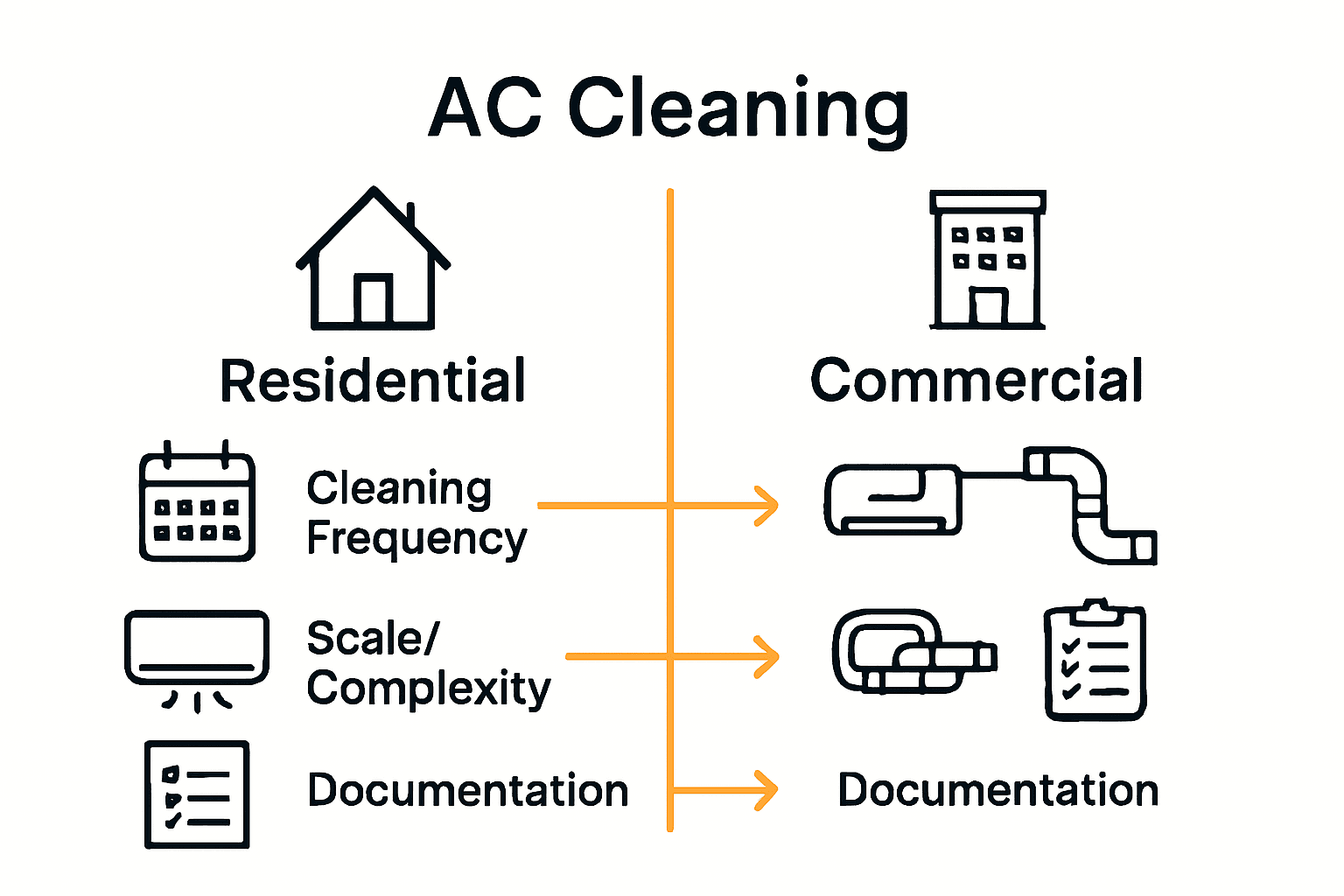
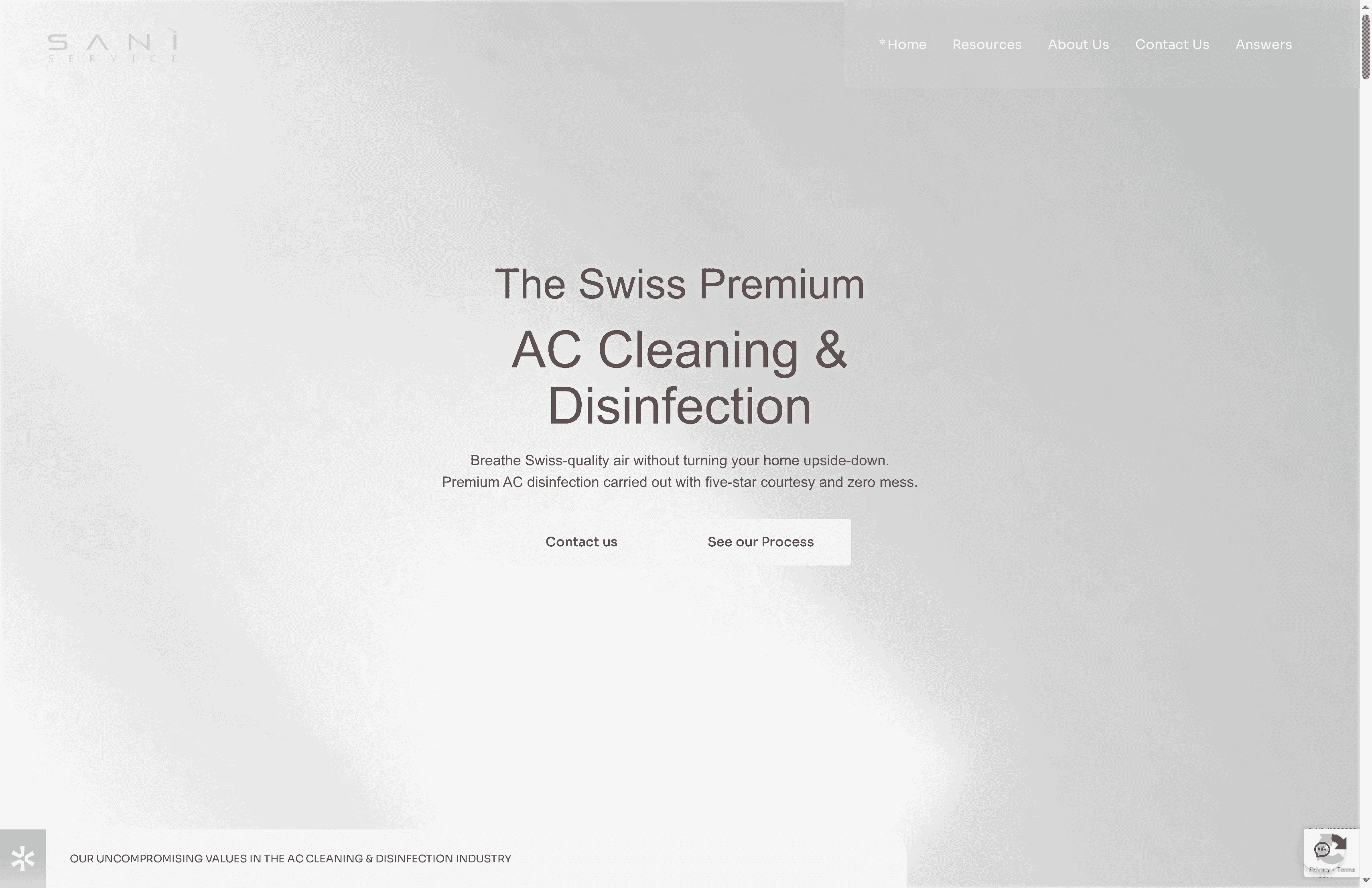


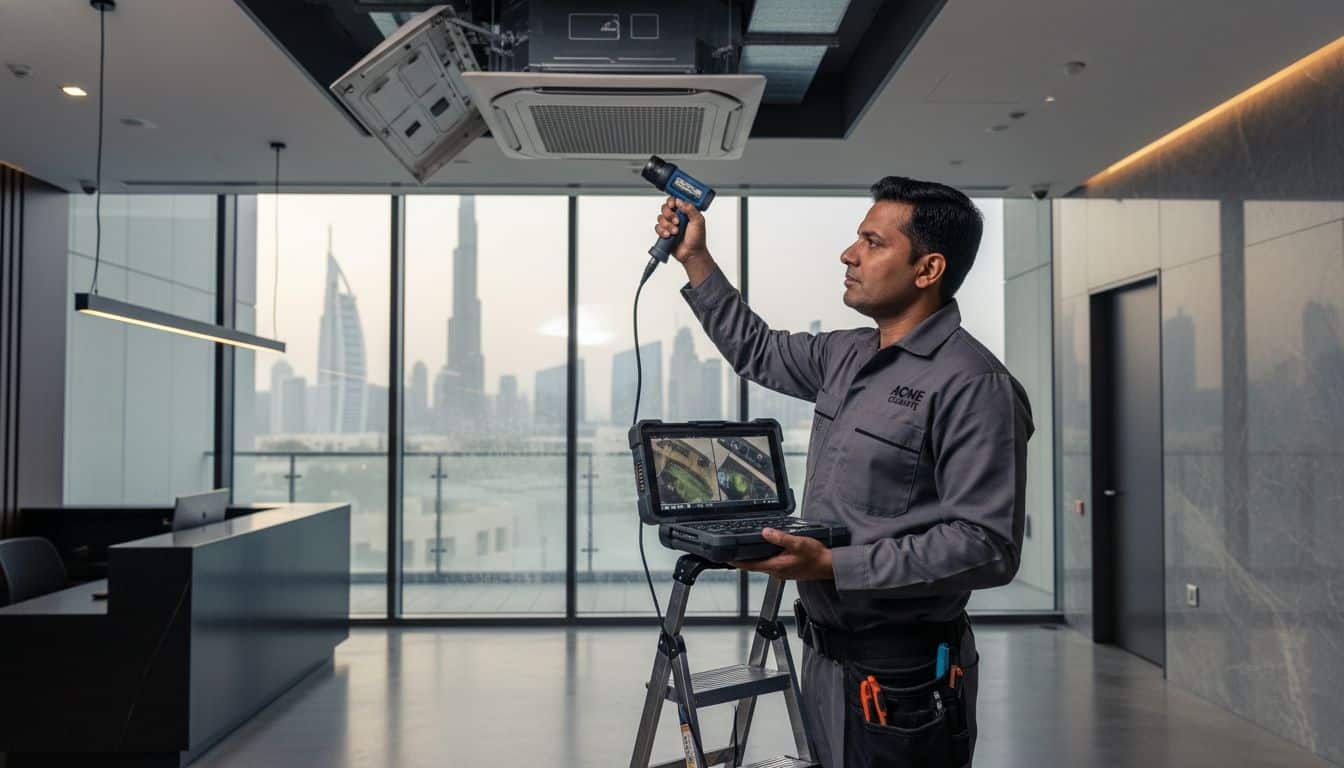

Leave a Reply